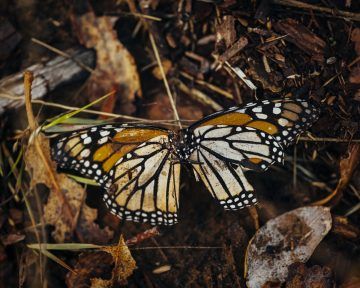Nora Caplan-Bricker in The Atavist:
 The phenomenon that some people in Brookings, Oregon, would later call a miracle began in early July 2019, when the same monarch butterfly appeared in Holly Beyer’s yard almost every day for two weeks. Beyer recognized it by a scratch on one wing. She and a friend named it Ovaltine, inspired by ovum, for the way it encrusted the milkweed in Beyer’s garden with eggs. Each off-white bump was no larger than the tip of a sharpened pencil. Clustered together on the green leaves, they looked like blemishes, as if the milkweed had sprouted a case of adolescent acne.
The phenomenon that some people in Brookings, Oregon, would later call a miracle began in early July 2019, when the same monarch butterfly appeared in Holly Beyer’s yard almost every day for two weeks. Beyer recognized it by a scratch on one wing. She and a friend named it Ovaltine, inspired by ovum, for the way it encrusted the milkweed in Beyer’s garden with eggs. Each off-white bump was no larger than the tip of a sharpened pencil. Clustered together on the green leaves, they looked like blemishes, as if the milkweed had sprouted a case of adolescent acne.
Brookings sits on Oregon’s rugged coast, and squarely within the monarch’s habitat. Every spring and summer, several generations of butterflies breed, lay eggs, and die, each in the span of about a month. The last generation of the year is different. Come fall, rather than produce offspring, it migrates south. Beyer, a petite retiree with a trace of red in her gray hair, is part of a local group who promote butterfly-friendly gardening practices—planting native flowers, for instance, and forgoing pesticides.
Most female monarchs disperse their eggs as widely as possible, but for unknowable reasons, Ovaltine laid almost 600 in Beyer’s yard. Under normal conditions, fewer than 5 percent of monarch eggs survive to adulthood. Beyer wanted the marvel she had witnessed from her deck to have a happier ending. She snipped the laden leaves and brought them inside, to shield the eggs from wind, rain, and predators. Before long she had hundreds of caterpillars, then hundreds of butterflies. She released them into the wild, and Brookings, with a human population of just 6,500, was suddenly ablaze with orange wings. A person could be taking the trash out or crossing a parking lot and see a flash, like a struck match, from the corner of their eye.
More here.
